In my wildest dreams, I imagine being in a quiz show. Chasing the big prize on the final question, I’m thrown a curly one: What was the B side to the Pretty Things 1965 hit ‘Don’t Bring Me Down‘? As the host sits back with a supercilious smug, I look her in the eye and fire back ‘We’ll Be Together’. The million is mine.
We all have odd tidbits of memory that have survived the years (or in my case many decades) and hibernate, ready to be plucked out at some strategic point, despite the waning of our mental powers. For some strange reason, the B sides of the singles I owned in my teenage years are in this category. Maybe it’s because many were remarkably good, an unexpected bonus after purchasing the 45 record, so that I ended up listening to them more than the A side. ‘We’ll Be Together’ is a prime example, a laid back bluesy number that has instant appeal.
Another that comes to mind is the B side of ‘For Your Love’, a worldwide hit in the same year from The Yardbirds. On the B side was Eric Clapton strutting his stuff with ‘Got To Hurry‘, again a bluesy number, but purely instrumental as EC introduced us to his blistering theatrical lead guitar playing. I was captivated. Clapton left the Yardbirds soon after, as he was unhappy with the direction they were headed, and likely only agreed to do ‘For Your Love’ if he could do something he preferred on the B side.
I suppose I’d better digress and explain what I’m talking about for those whose musical memories go back no further than CDs. I grew up in the heyday of vinyl records, just as 78s were fading out, with the market settling on 45s and 33s (the numbers are the speed of the turntable in rotations per minute). [strictly speaking, a 33 spins at 33 1/3 RPM] The former, also known as singles, were 7 inches (approx. 18 cm) in diameter, while the latter, known as albums, were/are 12 inches (approx. 30 cm) in diameter. Those in the know (i.e. those of my vintage) will remind me that there were also EPs (Extended Plays), which were the same size as a 45 but contained four songs, two on each side.
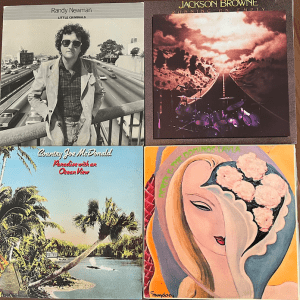 Like many old codgers, I still possess some of my old albums, and I’ve just dragged them out to peruse and play (having purchased a modern turntable with the facility to digitise if desired). They bring back memories, even of the occasion of their purchase. There’s one by and English singer, Barbara Dixon, who Marilyn and I had seen as a regular guest artist on a popular show (maybe even The Two Ronnies or something similar). Marilyn had praised her singing, so I thoughtfully went out and bought the album. To my intense disappointment, Marilyn was far from pleased, being so annoyed that I’d spent our good money on such a triviality that she threw it onto the back shelf of the car in which we were travelling. It lay there for a day or two, and when retrieved had buckled in the sun, and thus played a little wonkily when on the turntable.
Like many old codgers, I still possess some of my old albums, and I’ve just dragged them out to peruse and play (having purchased a modern turntable with the facility to digitise if desired). They bring back memories, even of the occasion of their purchase. There’s one by and English singer, Barbara Dixon, who Marilyn and I had seen as a regular guest artist on a popular show (maybe even The Two Ronnies or something similar). Marilyn had praised her singing, so I thoughtfully went out and bought the album. To my intense disappointment, Marilyn was far from pleased, being so annoyed that I’d spent our good money on such a triviality that she threw it onto the back shelf of the car in which we were travelling. It lay there for a day or two, and when retrieved had buckled in the sun, and thus played a little wonkily when on the turntable.
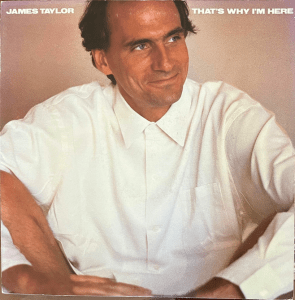 A firm favourite is ‘That’s Why I’m Here’, unsurprisingly by James Taylor. It was soon after we moved to Hong Kong in 1985 that I spotted it in the Tom Lee music store at the end of Ocean Terminal in Tsim Sha Tsui. You had to be alert in Tom Lee, as the records were filed strictly alphabetically, rather than by surname: so this was located under J rather than T. As a fan of JT, I bought it without listening to any tracks, and have loved it ever since. [sidenote: when it came out on CD some years later, it had an additional track, ‘My Romance’]
A firm favourite is ‘That’s Why I’m Here’, unsurprisingly by James Taylor. It was soon after we moved to Hong Kong in 1985 that I spotted it in the Tom Lee music store at the end of Ocean Terminal in Tsim Sha Tsui. You had to be alert in Tom Lee, as the records were filed strictly alphabetically, rather than by surname: so this was located under J rather than T. As a fan of JT, I bought it without listening to any tracks, and have loved it ever since. [sidenote: when it came out on CD some years later, it had an additional track, ‘My Romance’]
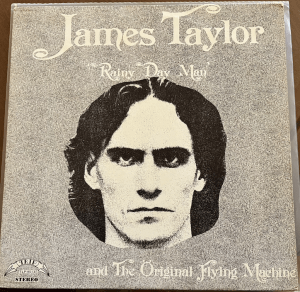 I’ve got pretty well everything James Taylor has ever done, including a rare early album of JT with his mate Danny Kootch. Fellow fans will recognise the phrase at the bottom right of the cover (The Original Flying Machine) with its link to the lyrics of his most famous song, ‘Fire and Rain‘. You know, the final line of the second verse: “Sweet dreams and flying machines in pieces on the ground”.
I’ve got pretty well everything James Taylor has ever done, including a rare early album of JT with his mate Danny Kootch. Fellow fans will recognise the phrase at the bottom right of the cover (The Original Flying Machine) with its link to the lyrics of his most famous song, ‘Fire and Rain‘. You know, the final line of the second verse: “Sweet dreams and flying machines in pieces on the ground”.
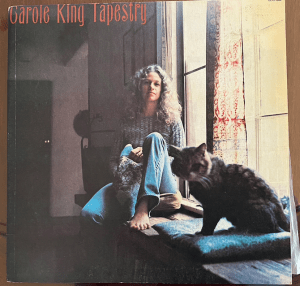 And then there’s the album that pretty well everyone from my era has or had: ‘Tapestry‘. [Although, for some, if you ask ‘Tapestry’ or ‘Blue‘, a few misguided souls will say ‘Blue’.] Nevertheless, I stand by Carole King’s stupendous album as one of the greatest of all time, a supreme feat of songwriting and musicianship. And it’s a tribute to the conviviality and cooperation of the emerging crop of stars back then to read the list of contributors to Tapestry, in terms of instruments and backing vocals. James Taylor provides both in multiple tracks, including the classic ‘Will You Love Me Tomorrow‘. Kootch is there, along with Russ Kunkel (drummer for JT) and Joni Mitchell (see ‘Blue’ above).
And then there’s the album that pretty well everyone from my era has or had: ‘Tapestry‘. [Although, for some, if you ask ‘Tapestry’ or ‘Blue‘, a few misguided souls will say ‘Blue’.] Nevertheless, I stand by Carole King’s stupendous album as one of the greatest of all time, a supreme feat of songwriting and musicianship. And it’s a tribute to the conviviality and cooperation of the emerging crop of stars back then to read the list of contributors to Tapestry, in terms of instruments and backing vocals. James Taylor provides both in multiple tracks, including the classic ‘Will You Love Me Tomorrow‘. Kootch is there, along with Russ Kunkel (drummer for JT) and Joni Mitchell (see ‘Blue’ above).
And then … there’s plenty more, although my collection has dwindled over the years and now stands at a coincidental 33. Are any of them worth anything? I don’t know – make me an offer!
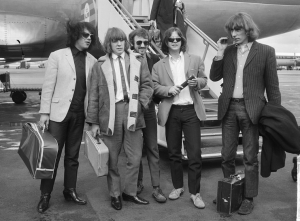
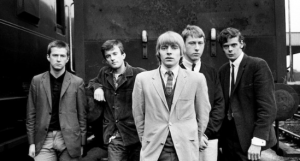
These days it is difficult to separate Clapton’s racism from his music and I can’t get over that unplugged debacle but his Derek and the Dominoes stuff still sounds good. And I still play Randy Newman regularly. And James Taylor is still good to listen to and play. All digitally these days, I’m afraid. Good read, David!
Thanks for comment, Andrys. Yes, Clapton’s racism totally unacceptable, although if plenty of black musicians can seemingly forgive him and happily play with him, where does it leave the rest of us?
David
Eric is also a vehement anti-vaxxer! I guess we cannot expect the musicians whose work we admire or love to also be good people in every other aspect of their lives. A pity that they can use their fame to get a wide audience for offensive viewpoints